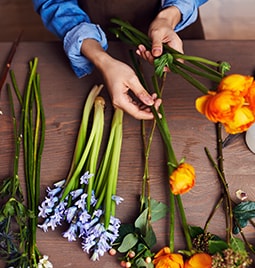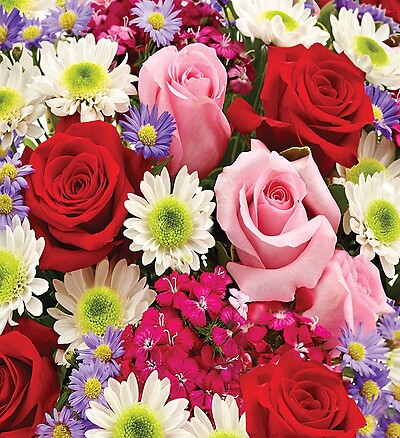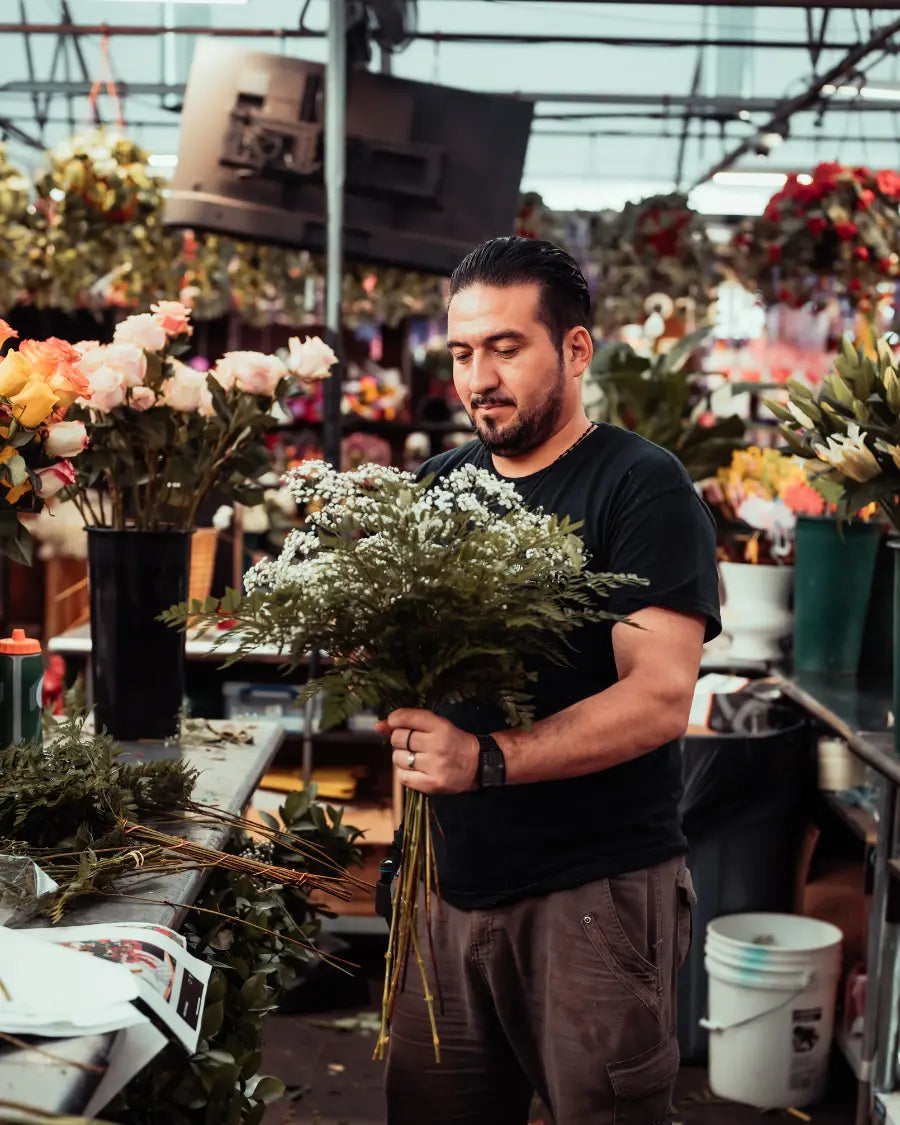Get unique floral designs at florist lockhart for every occasion.
Discover the Art of Floral Design: Tips From Expert Florists
Floral layout is not merely an aesthetic undertaking; it is a nuanced art type based in principles such as balance, proportion, and comparison. Specialist floral designers supply important insights into selecting the appropriate blossoms customized to details occasions, making certain that each setup reverberates with its designated message.
Recognizing Floral Layout Concepts
Typically overlooked by novice flower shops, understanding the fundamental concepts of flower design is necessary for creating aesthetically enticing plans (florist lockhart). These concepts act as the foundation upon which effective floral compositions are built, making certain consistency and balance in each development
The key concepts include balance, proportion, contrast, rhythm, and unity. Equilibrium refers to the distribution of aesthetic weight within an arrangement, which can be in proportion or asymmetrical. Percentage entails the relationship in between the size of blossoms and the container, ensuring that each component matches the others. Comparison, achieved via varying shades, shapes, and structures, includes rate of interest and deepness to the layout.

Rhythm overviews the visitor's eye through the plan, frequently achieved by repeating forms or shades. Unity ensures that all elements of the style job together cohesively, producing a sense of efficiency. By mastering these concepts, florists can raise their work, changing straightforward bouquets into spectacular aesthetic declarations.
Ultimately, a strong grasp of these floral layout concepts not just enhances creativity yet also cultivates a much deeper admiration for the artistry associated with flower arrangements (florist lockhart). With method and application, newbie floral designers can develop their abilities and create memorable designs
Choosing the Right Flowers
Selecting the suitable blossoms is an important action in the floral layout process, directly affecting the overall aesthetic and performance of the plan. To start, take into consideration the event; different events call for distinct blossom kinds. As an example, enchanting settings may benefit from roses, while joyful parties could fit sunflowers or gerbera sissies.
Following, examine the shade scheme. Unified colors can evoke specific emotions and boost the aesthetic charm. Make use of a color wheel to determine corresponding or similar color design that can develop a natural appearance. In addition, consider the period; seasonal blossoms not only make sure quality yet likewise often come at a lower price, making them a useful option.
One more essential variable is the designated longevity of the setup. By attentively choosing flowers, you can develop plans that reverberate with their designated objective and audience.
Methods for Plan

Another reliable technique is the "line design," which highlights the natural lines and forms of the blossoms. By utilizing long-stemmed blooms, designers can develop view website a feeling of movement and flow in the plan, attracting the eye along the lines created by the stems. Furthermore, integrating varying elevations in the setup includes deepness and rate of interest, enabling the audience to check out the item from various angles.
The "color barring" strategy is also important, where shades are organized together to create vibrant visual statements. This approach can stimulate certain emotions and established the state of mind of the plan. Do not neglect the significance of negative room; leaving spaces within the arrangement permits for taking a breath area, enhancing the overall aesthetic and protecting against congestion. Proficiency of these techniques will most certainly boost your flower design abilities.

Seasonal Floral Inspirations
Incorporating seasonal components into floral styles can greatly enhance their allure and importance. By lining up floral plans with the transforming periods, flower designers can evoke details state of minds, styles, and colors that resonate with customers and the setting. Each season supplies an unique combination of blooms and vegetation that permits creativity and motivation.
In spring, take into consideration the delicate beauty of tulips, daffodils, and cherry blossoms, which embody revival and vibrancy. Summer season provides itself to vibrant colors and lush structures with sunflowers, peonies, and zinnias, commemorating abundance. Autumn's abundant Visit Your URL tones can be captured through dahlias, chrysanthemums, and decorative yards, developing warm, welcoming arrangements that reflect the harvest. Winter season provides a calm visual with evergreens, amaryllis, and seasonal berries, excellent for stimulating a feeling of tranquility and festivity.
Caring for Your Arrangements
Looking after flower plans is necessary to preserve their charm and durability. Appropriate care ensures that your blossoms stay vibrant and fresh, boosting the visual appeal of your space. Beginning by putting your arrangement in a great place, away from direct sunlight and drafts, as severe temperatures can trigger wilting and staining.
Frequently examine the water level in the flower holder, guaranteeing it is sufficient to cover the stems adequately. Change the water every couple of days to stop microbial development, which can shorten the life expectancy of your plan.
Furthermore, consider the type of flowers in your arrangement; some might call for details care. Stay clear of positioning your setups near ripening fruit, as ethylene gas can accelerate wilting.

Verdict
Finally, mastering the art of flower design entails an extensive understanding of fundamental principles, mindful selection of flowers, and the application of reliable plan techniques. Seasonal inspirations even more boost imagination, while correct treatment ensures that flower displays maintain their charm and long life. By integrating these check this site out aspects, people can develop impactful arrangements that communicate emotion and serve their designated purpose, eventually enhancing the experience of both the developer and the recipient.